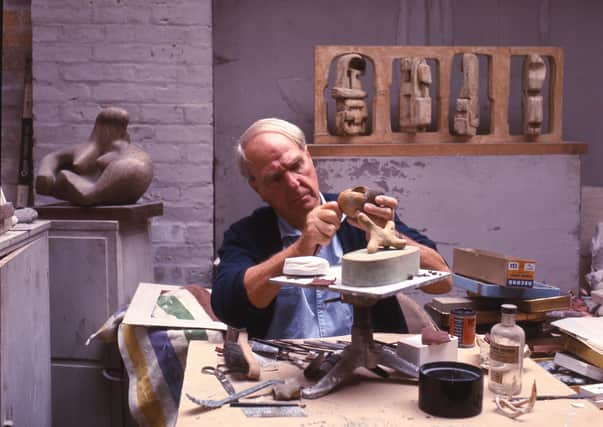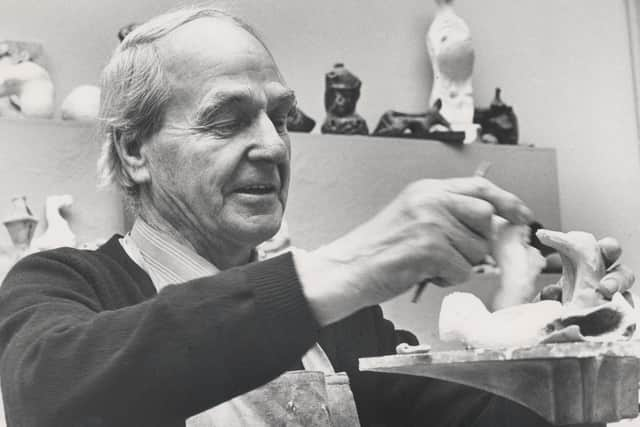Exhibition explores the changing form of Henry Moore


It is not often that the Henry Moore Institute in Leeds, established to further the study and appreciation of fine arts, particularly sculpture, showcases the work of its founder, but two opportunities have come along in quick succession.
Last October the Institute celebrated the 100th anniversary of Moore’s arrival in Leeds to study at the School of Art with an exhibition of the artist’s notebooks and archive photographs from that time. It proved to be very popular and this month a new exhibition opens at the Institute, only the fifth in its 28-year history to focus on Moore’s work.
Advertisement
Hide AdAdvertisement
Hide AdConfiguration, curated by Hannah Higham senior curator of collections and research at the Henry Moore Foundation, brings together a small selection of sculpture, drawings and collages highlighting the artist’s ceaseless fascination with form, material and volume. Throughout his life Moore collected objects such as stones, shells, bones and driftwood, responding to their tactile power, using them as inspiration and incorporating them into his work.


“I hope the exhibition will help to illustrate the practices and processes that Moore went through in creating those large-scale abstract sculptures,” says Higham. “Since very early in his career he explored the humanity of those found objects. The human figure was so important to his work and he was drawing and looking at shells and bones and morphing them into figures and torsos. So, on display we have a selection of sketches and transformational drawings. There are collages in which he had cut up drawings and restructured them and added to them. He had boxes full of things he had picked up on walks so he was surrounded in his studio by these little sculptural ideas and when he enlarges them, they become related to the landscape – like rocky outcrops. You get the sense of those bodies, human forms, changing into shapes you find in nature.”
Moore’s own personal, visceral connection with landscape and the natural world was a key factor in the development of his artistic sensibility. “His Yorkshire roots played a big part in that,” says Higham. “He had a strong sense of sculptural form from a very young age and that came from the physical experience of climbing on rocks and crawling in caves as a child. He had an acute awareness of space and how that is as much part of a sculpture as its mass. You can see that especially in his two- and three-part figures where he breaks down the boundaries of what the body can be.”
In 1978, late in his career and towards the end of his life, Henry Moore said: “For me, everything in the world of form is understood through our own bodies... To observe, to understand, to experience the vast variety of space, shape and form in the world, 20 lifetimes would not be enough.” He certainly managed to pack a great deal of observation, understanding and experience into his own lifetime, leaving behind a formidable, hugely influential, body of work and a lasting creative legacy.
Advertisement
Hide AdAdvertisement
Hide Ad“This exhibition is a very intimate show about the material in the artist’s hands and a less well-known part of the Henry Moore story,” says Higham. “I hope it offers some insight into how he came up with the ideas for those iconic monumental works.”
At the Henry Moore Institute, Leeds, September 17-January 23, 2022. henry-moore.org
Comment Guidelines
National World encourages reader discussion on our stories. User feedback, insights and back-and-forth exchanges add a rich layer of context to reporting. Please review our Community Guidelines before commenting.